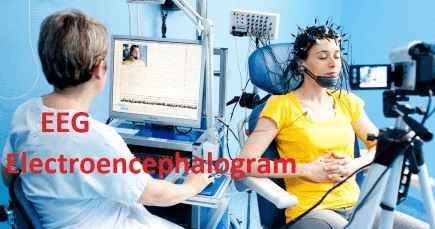EEG Full Form | What is Electroencephalogram
What is the full form of EEG
EEG: Electroencephalogram
EEG stands for Electroencephalogram. It is a test that is performed to check the electrical activity of the brain. The brain cells, which are called neurons, communicate with each other through electrical impulses.

EEG provides a measure of brain wave, i.e., how the brain functions over time. It tracks and records brain wave patterns or the electrical signals of the brain.
The machine used to perform this test comes with small metal discs with thin wires, which are called electrodes. These electrodes are placed on the scalp from where it sends signals to a computer to record the results. For a normal brain activity, it makes a normal or recognizable pattern, but for abnormal brain activity, the pattern may be distorted or unrecognizable.
How EEG Works:
EEG is a safe and painless procedure. The electrodes placed on the scalp pick up electrical activity from the brain cells (neurons) inside your brain and forward it to a machine where they are displayed as a series of lines recorded on a moving paper or displayed on a computer screen. After getting the results, the technician will take the electrodes off. A doctor who specializes in the brain, such as a neurologist, will analyse the recordings of your brain wave pattern.
Why EEG Performed?
The EEG is performed to diagnose the following medical conditions or under the following circumstances:
- To diagnose and monitor seizure disorders
- To diagnose epilepsy and sleep disorders
- To find out the cause of other problems such as sleep disorders and changes in behaviour
- To evaluate brain activity after a severe head injury or before a heart or liver transplant
- To show the type and location of the activity in the brain during a seizure
- To confirm or rule out various conditions such as Encephalitis, Brain Tumour, Encephalopathy, and Stroke Dementia